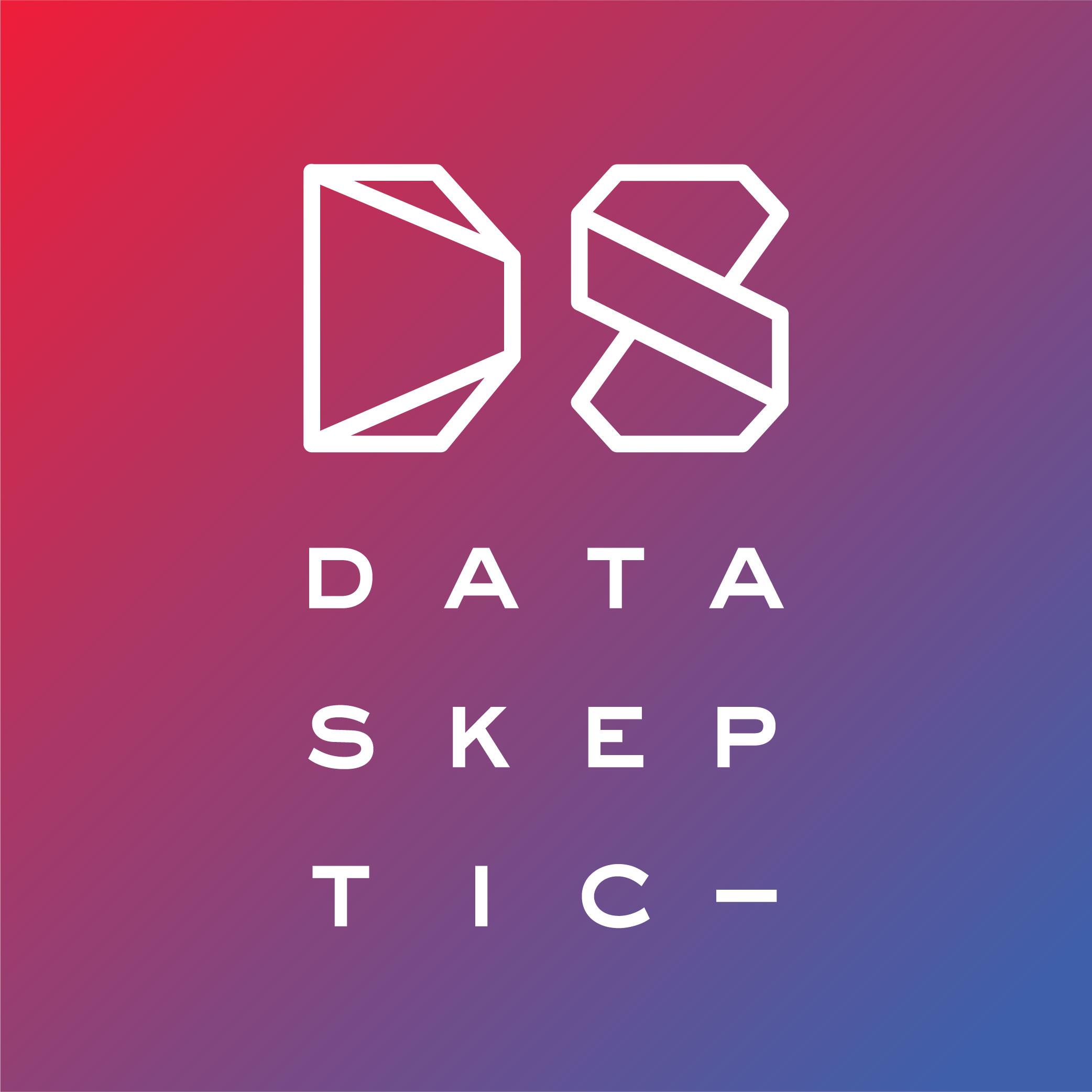

Data Skeptic
Kyle Polich
The Data Skeptic Podcast features interviews and discussion of topics related to data science, statistics, machine learning, artificial intelligence and the like, all from the perspective of applying critical thinking and the scientific method to evaluate the veracity of claims and efficacy of approaches.
Episodes
Mentioned books

Feb 23, 2018 • 19min
Optimal Decision Making with POMDPs
In a previous episode, we discussed Markov Decision Processes or MDPs, a framework for decision making and planning. This episode explores the generalization Partially Observable MDPs (POMDPs) which are an incredibly general framework that describes most every agent based system.

Feb 16, 2018 • 43min
AI Decision-Making
Making a decision is a complex task. Today's guest Dongho Kim discusses how he and his team at Prowler has been building a platform that will be accessible by way of APIs and a set of pre-made scripts for autonomous decision making based on probabilistic modeling, reinforcement learning, and game theory. The aim is so that an AI system could make decisions just as good as humans can.

Feb 9, 2018 • 23min
[MINI] Reinforcement Learning
In many real world situations, a person/agent doesn't necessarily know their own objectives or the mechanics of the world they're interacting with. However, if the agent receives rewards which are correlated with the both their actions and the state of the world, then reinforcement learning can be used to discover behaviors that maximize the reward earned.

Feb 2, 2018 • 25min
Evolutionary Computation
In this week's episode, Kyle is joined by Risto Miikkulainen, a professor of computer science and neuroscience at the University of Texas at Austin. They talk about evolutionary computation, its applications in deep learning, and how it's inspired by biology. They also discuss some of the things Sentient Technologies is working on in stock and finances, retail, e-commerce and web design, as well as the technology behind it-- evolutionary algorithms.

Jan 26, 2018 • 20min
[MINI] Markov Decision Processes
Formally, an MDP is defined as the tuple containing states, actions, the transition function, and the reward function. This podcast examines each of these and presents them in the context of simple examples. Despite MDPs suffering from the curse of dimensionality, they're a useful formalism and a basic concept we will expand on in future episodes.

Jan 19, 2018 • 29min
Neuroscience Frontiers
Last week on Data Skeptic, we visited the Laboratory of Neuroimaging, or LONI, at USC and learned about their data-driven platform that enables scientists from all over the world to share, transform, store, manage and analyze their data to understand neurological diseases better. We talked about how neuroscientists measure the brain using data from MRI scans, and how that data is processed and analyzed to understand the brain. This week, we'll continue the second half of our two-part episode on LONI.

Jan 12, 2018 • 27min
Neuroimaging and Big Data
Last year, Kyle had a chance to visit the Laboratory of Neuroimaging, or LONI, at USC, and learn about how some researchers are using data science to study the function of the brain. We're going to be covering some of their work in two episodes on Data Skeptic. In this first part of our two-part episode, we'll talk about the data collection and brain imaging and the LONI pipeline. We'll then continue our coverage in the second episode, where we'll talk more about how researchers can gain insights about the human brain and their current challenges. Next week, we'll also talk more about what all that has to do with data science machine learning and artificial intelligence. Joining us in this week's episode are members of the LONI lab, which include principal investigators, Dr. Arthur Toga and Dr. Meng Law, and researchers, Farshid Sepherband, PhD and Ryan Cabeen, PhD.

Jan 5, 2018 • 17min
The Agent Model of Artificial Intelligence
In artificial intelligence, the term 'agent' is used to mean an autonomous, thinking agent with the ability to interact with their environment. An agent could be a person or a piece of software. In either case, we can describe aspects of the agent in a standard framework.

Dec 29, 2017 • 33min
Artificial Intelligence, a Podcast Approach
This episode kicks off the next theme on Data Skeptic: artificial intelligence. Kyle discusses what's to come for the show in 2018, why this topic is relevant, and how we intend to cover it.

Dec 22, 2017 • 13min
Holiday reading 2017
We break format from our regular programming today and bring you an excerpt from Max Tegmark's book "Life 3.0". The first chapter is a short story titled "The Tale of the Omega Team". Audio excerpted courtesy of Penguin Random House Audio from LIFE 3.0 by Max Tegmark, narrated by Rob Shapiro. You can find "Life 3.0" at your favorite bookstore and the audio edition via penguinrandomhouseaudio.com. Kyle will be giving a talk at the Monterey County SkeptiCamp 2018.


